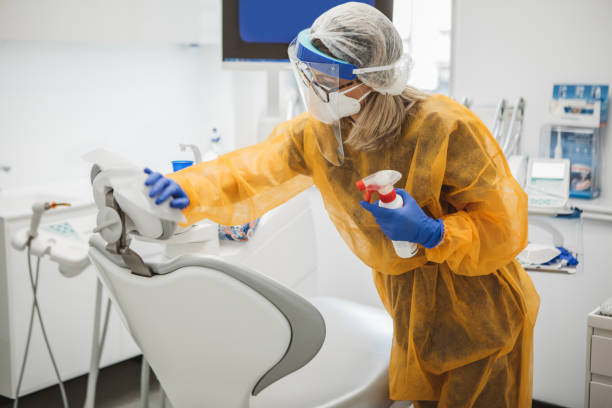10 sources of cross-contamination in hospitals
Controlling the sources of germs in hospitals helps prevent cross-contamination and nosocomial infections.

Controlling the sources of germs in hospitals helps prevent cross-contamination and nosocomial infections. Cross-contamination is one of the great concerns of the managers of hospitals, social health centers, and medical centers, among others.
And it is that this is the main cause of nosocomial or nosocomial infections among patients, professionals, and visitors.
But, frequently, the sources of contamination in health facilities are less obvious than we think.
Here are the top 10 hotspots for germs in hospitals.
- Items found in the kitchen
- Hands act as a means of transport for germs
- Medical equipment and surgical instruments
- Crash cart and instrument tray
- Computer and telephone keyboards
- Textile surfaces and hospital clothing
- Patient environment
- Medical records and reports
- Band-aid and dressing material
- Diagnostic equipment
Items found in the kitchen
Kitchens found in hospitals have a greater responsibility in terms of food safety. And it is that, besides guaranteeing food safety, they have a public that is very susceptible to possible food poisoning. Poorly cooked meat or lack of hygiene in the dishes can lead to the transmission of germs through food.
Cleaning and disinfection must be carried out periodically and thoroughly to eliminate possible sources of contamination.
Hands act to transport germs
We all know that human hands are one of the main transmitters of germs in any environment. According to several World Health Organization (WHO) publications, handwashing with soap and water helps save lives.
This happens because we cut the chain of transmission and prevent viruses or bacteria from passing from one surface to another every time we touch something with our hands.
Medical equipment and surgical instruments
We use surgical instruments for invasive treatments, which carry a higher risk of nosocomial infections. That many infections occur after some operations indicates surgical instruments are not properly sterilized.
In this article, we explain how to sterilize medical tools and surgical instruments after use.
Crash cart and instrument tray
The car used to transport medicines or respond to medical emergencies can become contaminated after attending an emergency. Cleaning and disinfecting the cart and all the elements that make it up help to reduce the microbial load.
It is important that qualified personnel carry the hygiene of the crash cart and the instrument tray out.
Computer and telephone keyboards
The spaces that remain between the keys of keyboards or telephones are authentic nests of viruses and bacteria. This is even more dangerous if multiple people use these items at the same time.
Keyboards should be regularly cleaned and disinfected with an alcohol solution to prevent damage to the devices.
Textile surfaces and hospital clothing
Hospital cushions, sheets, curtains, or pajamas are textile surfaces that are in very close contact with patients who may have different pathologies. Their correct classification before transferring them to the laundry is key to preventing cross-contamination.
In this article, we explain how to classify hospital clothing and in this article how it should need treatment in the laundry.
Patient environment
Patients with different pathologies coexist in hospitals, among which we can find infections caused by different viruses or bacteria. This makes any space that the patient has come into contact with susceptible to the accumulation of many germs.
For this reason, professional cleaning and disinfection are essential every time we are faced with discharge or hospital admission.
Medical records and reports
Medical reports and records are documents handled by many people every day. In addition, they are also present in different areas of a hospital with different levels of risk.
In order to stop the proliferation of viruses and bacteria, it is important to maintain constant hand hygiene.
Band-aid and dressing material
Using large rolls of tape increases the risk of cross-contamination and increases the risk of infection among patients. To reduce this risk, it is important to use small rolls of tape and to target them to as few patients as possible. The same happens with the dressing material that have similar characteristics to plasters.
Diagnostic equipment
Diagnostic equipment is another of the most common sources of cross-contamination in hospitals. As with the rest of the elements, different people handle it and this increases the risk of transmission of viruses and bacteria.
For the cleaning of these devices, it is advisable to use germicidal disinfectants. Do you want to discover more recommendations for cleaning and disinfecting hospitals? We show them to you in this article.
If you have questions or queries, you can contact us by writing to us through our contact form.
